Archive for October, 2021
How to Apply Toyota Lean Management to Your Business
Have you wondered if the principles of Toyota Lean Management (TLM) could apply to your business? There is much information on the subject in books and the internet, but why go elsewhere when you can get your information directly from the source – Toyota!
Many years ago, Toyota created the Toyota Production System (TPS), a philosophy that organizes manufacturing and logistics at Toyota, including its interaction with suppliers and customers. TPS is also frequently called “lean manufacturing.”
Three top Toyota executives influenced TPS/Lean Manufacturing: founder Sakichi Toyoda, his son Kiichiro Toyoda and Toyota chief engineer Taiichi Ohno. The system’s main goal is simple – to eliminate waste, called “Muda.”
We sorted through the abundance of information on the Toyota Forklifts website to curate three articles for those just starting to learn about the principles of Lean Management.
The first article, titled “What is Toyota Lean Management?” is a great place to start.
The article explains the elements necessary to build a strong “house” using Toyota Lean Management (TLM). You’ll learn about a critical component for a strong TLM foundation, a five-step system called 5S. The principles of 5S can be applied to any business setting, manufacturing/factory setting, or even your personal life to help organize your home and practices.
You’ll also learn the importance of developing a culture of respect encouraging innovation and development, the Lean Management Pillars: Just-in-Time and Jidoka, and the elements necessary to build the support beams and roof to complete your “house.”
The following article is titled “Benefits of Lean Management Practices.” You’ll learn the three benefits of lean management techniques here.
Finally, we suggest you read “How to Get Started on Your Lean Journey.” This article details four specific steps you should take to get started.
Toyota Lean Management is both a process and a mindset. Our experts can walk you through the process and offer valuable advice to increase productivity and efficiency throughout your company. Contact us today if you’d like to lean on us (pun intended) to help you implement Toyota Lean Management practices in your operation.
How to Set Up a Forklift Maintenance Schedule
Most people know regular service is vital for a safe and reliable car. The same goes for forklifts. Setting up a regular forklift maintenance schedule for your forklift fleet can help with things like:
- Expensive repairs
- Unexpected downtime
- Protecting the resale value of your fleet
- Protecting the safety of your forklift operators and employees
So, how often should you set up a service for your forklift or fleet? Well, it depends on the type of forklifts you use and how often you use them.
Internal Combustion Forklifts
Internal Combustion (IC) forklifts generally need service every 250-300 hours. You may need service more often if you operate forklifts in extreme temperatures or dirty environments or have fork attachments.
Here are the top four things to focus on during a 250–300-hour IC forklift service:
- Change filters
- Grease parts
- Look for minor problems to prevent big problems
- Conduct safety inspection
Electric Forklifts
With fewer parts to replace and service, electric forklifts require less maintenance than IC forklifts. In general, you should inspect and service electric forklifts every 500 hours. Again, your service intervals may vary if you work in extreme environments or use fork attachments.
Here are the top six things to focus on during a 500-hour electric forklift service:
- Check the motor
- Inspect the cables
- Lubricate moving parts
- Inspect battery
- Check lights, accessories, and attachments
- Conduct safety inspection
Sample One-Year Maintenance Schedule for IC and Electric Forklifts
For reference, here is a sample one-year maintenance schedule for IC and electric forklifts. It’s a general list of things to focus on; however, you should always follow manufacturer guidelines for your specific forklift.
Every 250 Hours/Two Months
- Check engine idle speed and ignition timing
- Lubricate chassis and mast components
- Change engine fluids and filters
- Blow out and inspect the brakes
- Inspect the hydraulic system and mast
- Check belts, hoses, the drive train, steering, and electrical system
- Inspect tires for damage and wear
- Inspect attachments (if applicable)
Every 500-600 Hours/Four Months
- All items in the 250-hour service above
- Inspect the chains for damage and proper tension, check the mast operation, inspect carriage rollers, lift and tilt cylinders for proper function
- Check/adjust the chassis links, clutch release bearing, and mast support bushing
- Inspect the hydraulic oil pump and check the hydraulic oil level hydraulic filter (replacing if necessary)
- Clean the radiator
- Inspect the PCV valve
- Asses pedal free play
- Check/adjust hand brake
Every 1,000 Hours/Six Months
- All items in the 250 and 500-hour service above
- Change all fluids and filters, including (but not limited to) hydraulic, transmission, and brake fluid.
- Replace the spark plugs
- Lube drive hubs
Every 2,000 Hours/One Year
- All items in the 250 and 500, and 1,000-hour service above
- Replace the: antifreeze, differential and transmission oil, contact breaker (points), and condenser (on older units)
- Hydraulic pressure check
- Cooling system check
- Inspect steer axle
- Inspect brake drums (replace if necessary)
- Compression check
- Clean and check the fuel system
Service intervals can get confusing if you have a large or mixed fleet. Contact us to set up a service appointment today! Our team of experienced forklift technicians can create a general maintenance plan that considers all the different types of forklifts in your fleet and when to service them.
